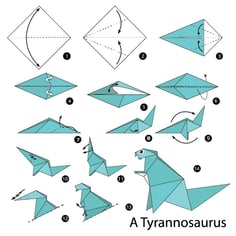 Following several SECS/GEM series blog posts, including Collection Events, Data Polling and Alarms, we now get into the features and merit of the GEM feature called Recipe Management. We will cover the definition of recipes, what recipe management means and why you need this feature!
Following several SECS/GEM series blog posts, including Collection Events, Data Polling and Alarms, we now get into the features and merit of the GEM feature called Recipe Management. We will cover the definition of recipes, what recipe management means and why you need this feature!
What are recipes?
Recipes are sets of instructions describing how the equipment should process its material. The Recipe content is defined by the equipment supplier.
What is recipe management?
Recipe management allows the factory host to transfer recipes to and from the equipment. It also requires the equipment to notify the factory host when recipes are changed on the equipment.
Why do you need this feature?
Almost all semiconductor factories require this feature to ensure recipe integrity and to support traceability. The host will upload approved recipes from the equipment and save them for later use to ensure that the recipe does not change. For traceability, the recipe is usually saved with the process data.
How does recipe management work?
Recipes are passed between the host and equipment via SECS messages. There are several sets of SECS messages to enable this. E30 GEM specifies formatted, unformatted, and large recipe message sets. The large recipe message set will not be discussed here.
The equipment is also required to notify the host whenever recipes are changed by an operator at the equipment. A PPChange collection event is generated with two data variables PPChangeName containing the PPID of the recipe that changed and PPChangeStatus containing the type of change (created, deleted, edited).
Once a recipe has been transferred to the equipment, the equipment should verify the content. If the recipe is invalid, then a PPVerificationFailed collection event should be generated with a PPError data variable containing the validation failure information to notify the host of the problem. The recipe should not be used if it fails verification.
Identification
Each recipe is identified by an ASCII name called a process program ID or PPID. The factory host and the equipment GEM interface use the name in recipe operations.
Persistence
Recipes are persisted in a GEM interface. If the host disconnects and reconnects, or if the equipment is restarted, the GEM interface will remember the recipes. In addition, most factory hosts will save recipes on the factory side.
Which messages are used?
Here is a summary of each of the primary messages related to collection events. Note that the “S” identifies the “stream” and “F” identifies the “function”. Together, a stream and function number uniquely identify a message.
All Recipes
|
Message ID |
Direction |
Description |
|
S7F17 |
Host -> Equipment |
Delete a recipe from the equipment. An empty list will delete all recipes from the equipment. |
|
S7F19 |
Host->Equipment |
Request a list of available recipes from the equipment |
Unformatted Recipes
|
Message ID |
Direction |
Description |
|
S7F1 |
Host<-Equipment |
Equipment requests to upload a recipe |
|
S7F3 |
Host<-Equipment |
Equipment uploads a recipe to the host |
|
S7F5 |
Host<-Equipment |
Equipment requests a recipe from the host |
|
S7F1 |
Host->Equipment |
Host requests to download a recipe |
|
S7F3 |
Host->Equipment |
Host downloads a recipe to the equipment |
|
S7F5 |
Host->Equipment |
Host requests a recipe from the equipment |
Formatted Recipes
|
Message ID |
Direction |
Description |
|
S7F1 |
Host<-Equipment |
Equipment requests to upload a recipe |
|
S7F23 |
Host<-Equipment |
Equipment uploads a recipe to the host |
|
S7F25 |
Host<-Equipment |
Equipment requests a recipe from the host |
|
S7F1 |
Host->Equipment |
Host requests to download a recipe |
|
S7F23 |
Host->Equipment |
Host downloads a recipe to the equipment |
|
S7F25 |
Host->Equipment |
Host requests a recipe from the equipment |
|
S7F29 |
Host<-Equipment |
Equipment requests to verify a recipe |
|
S7F27 |
Host<-Equipment |
Equipment sends recipe verification results |
Frequently Asked Questions about Recipe Management
How large a recipe can be transferred?
For unformatted recipe messages, the recipe is either a single ASCII string or a binary array value. A single array value is limited to 16.777215 MB.
Formatted recipe messages, the recipe is split up into a list of items. A single array value is limited to 16.777215 MB. Total message size is limited to 4.294967295 GB.
Click here to read the other articles in our SECS/GEM Features and Benefits series.
To download a white paper on an introduction to SECS/GEM, Click below:





